What is sheep's wool called and what is made from sheep's wool? At first glance, these are two very simple questions, but not everyone can answer them.
That is why we will continue to talk about the uniqueness of wool products, because today sheep fiber is becoming more and more popular every day.
Story
Scientists claim that wool fiber was used much earlier than flax. Our ancestors first learned to process animal skins, and then mastered textile technology.
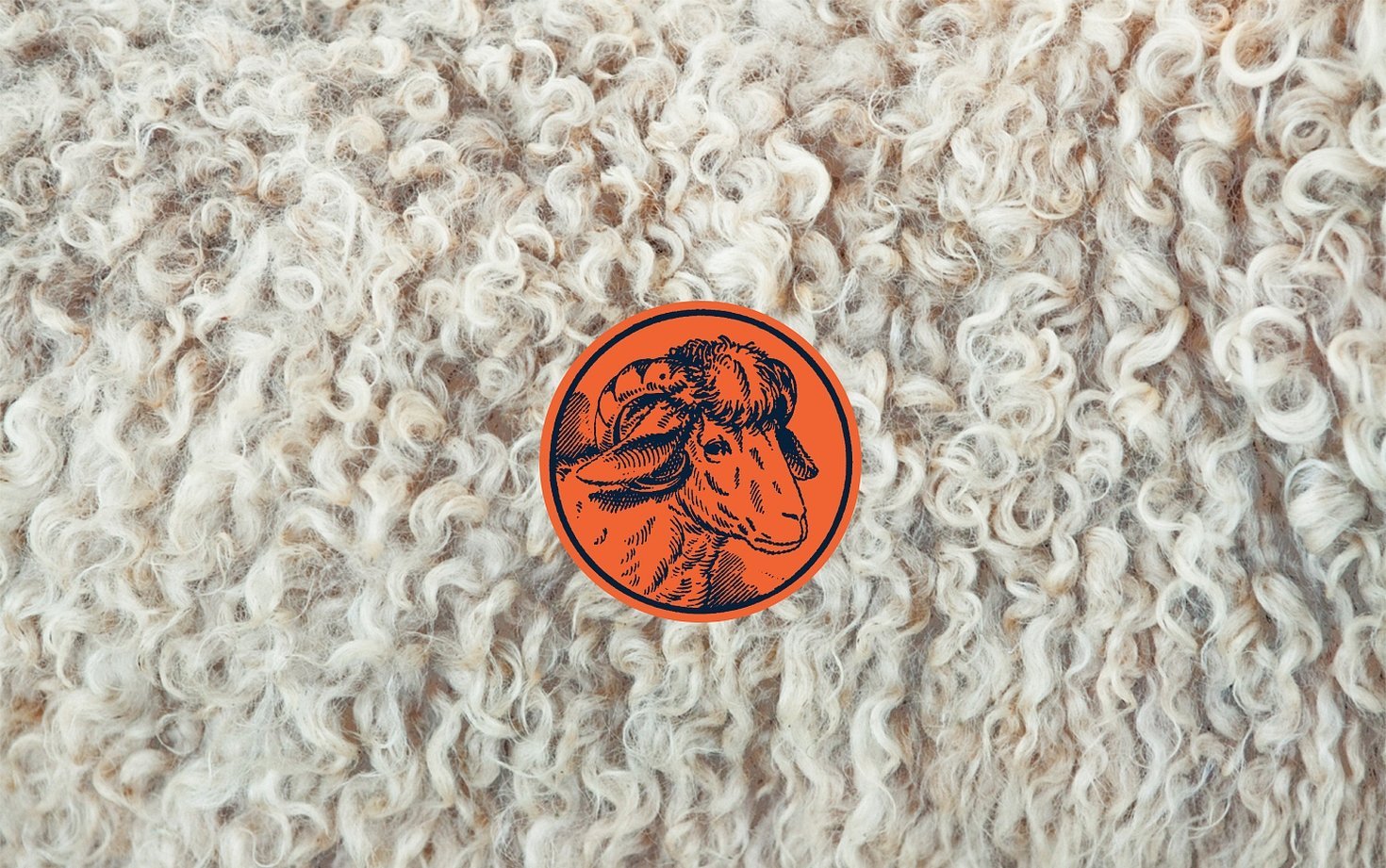
Archaeologists have found that sheep were domesticated by Egyptians several thousand years ago. A sample of woolen fabric was found in burial mounds on the banks of the Oka River, which testifies to the ancient origins of weaving.
It is also known that in ancient Rome they were engaged in crossbreeding sheep, thanks to which the Merino breed Tarantino appeared. The Romans actively used the fiber of these animals to produce clothing.
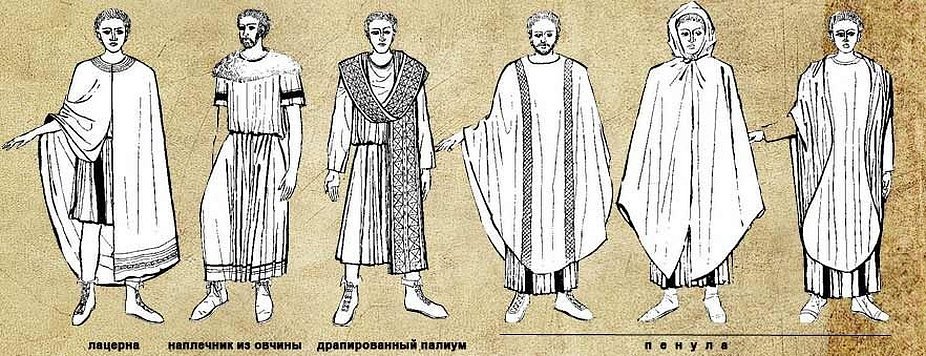
Manufacturing process
The wool removed from sheep is called fleece. The sheep are shaved by a shearer. The wool is removed carefully so as not to damage the structure of the fiber. Rolled and dirty sheepskin must be removed immediately, otherwise the fabric will be of poor quality. All the sheared fiber is sorted by length, color, thickness and waviness. If the fabric contains the most similar hairs, the fabric will last a long time.
Additional informationThe highest quality and most beautiful sheepskin is considered to be that which is sheared in the spring.
After shearing, the cleaning stage begins. The fleece is washed by specially trained people, since it is necessary not to damage the structure of the fiber and lanolin (the natural animal wax that covers the ram's hair).
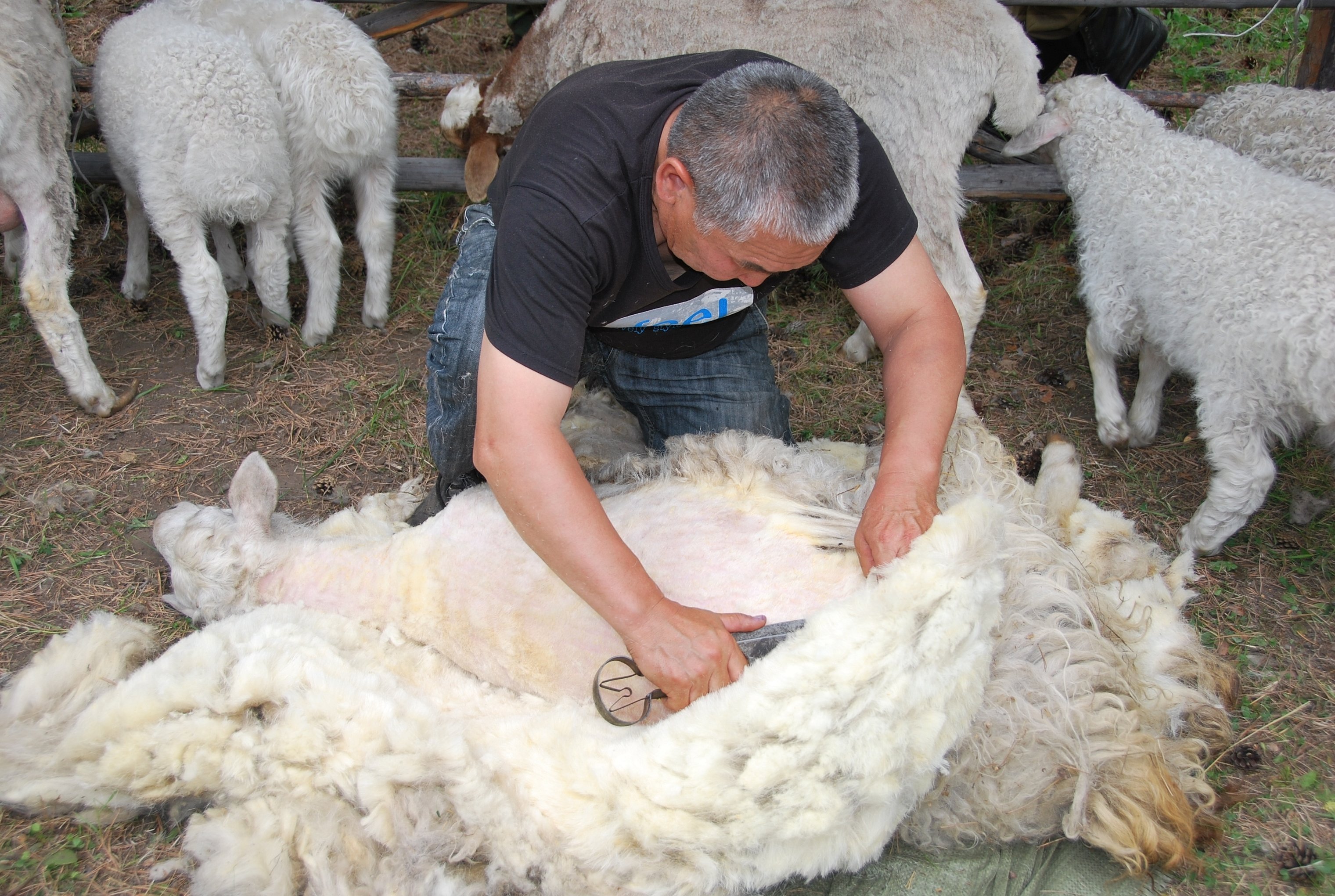
After washing, the fiber is placed in a special machine where it is combed. Each hair is separated separately, and then, using air in one of the chambers of the machine, it is combined again. Then the fibers are treated with special oils, which are designed to fix the lanolin.
The next stage involves carefully combing the wool with special brushes. The resulting fabric is divided into even strips and fed into a machine that transforms the yarn into thin threads called roving. It is loaded into a spinning machine, where several threads are combined into one.
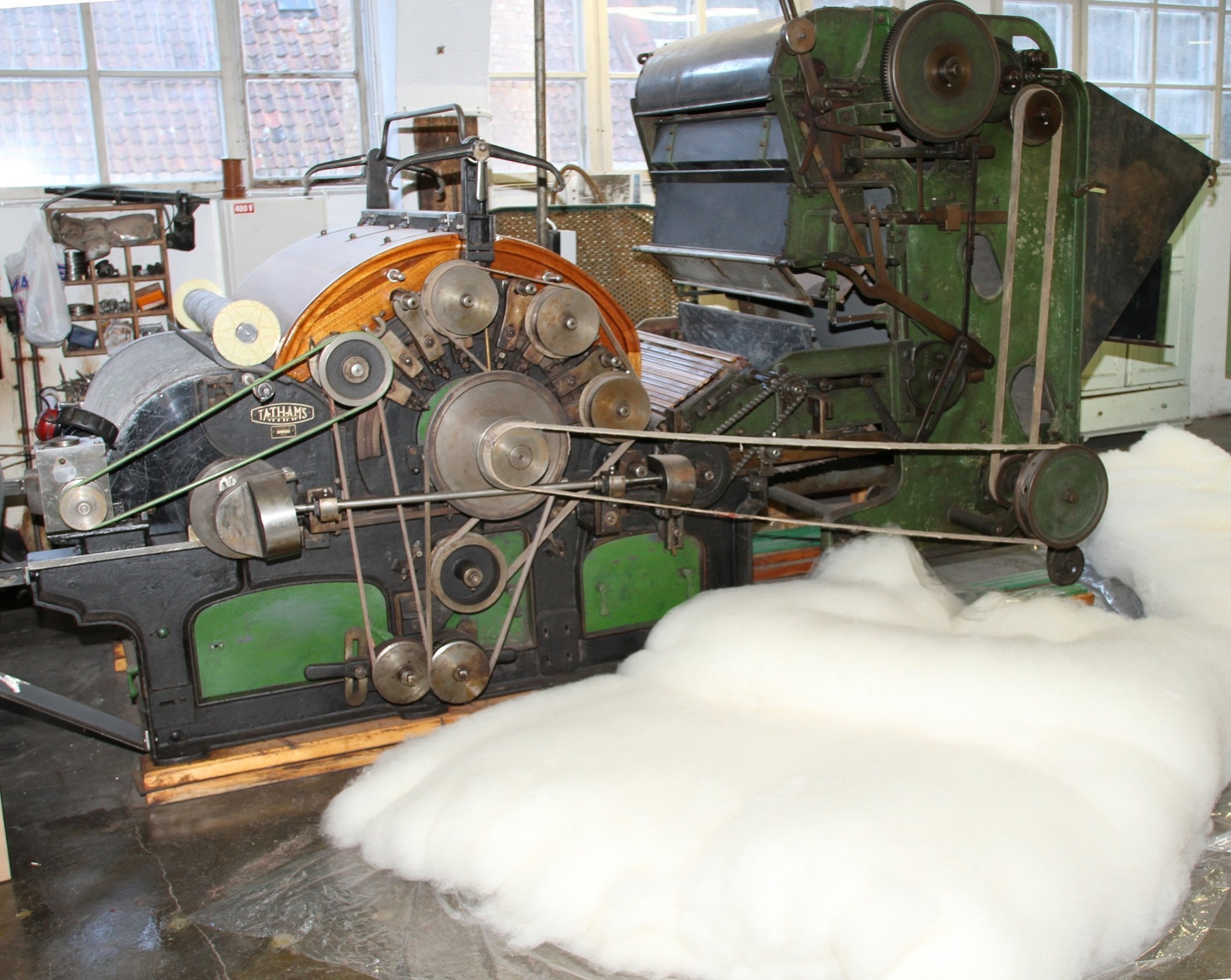
Using another loom, the threads are woven into woolen fabrics, which are intended for the production of warm and comfortable items.
Material characteristics
Products made from sheep wool are famous for their useful properties. The main ones include:
- Ability to maintain natural temperature conditions. Sheepskin absorbs human sweat and remains dry. Sweat evaporates into the atmosphere without a trace.
- Antibacterial properties. Fleece does not accumulate bacteria and microbes, and also has the property of self-cleaning.
- Healing properties. Lanolin is extracted from sheepskin and is used in the production of medicinal products. It is quite difficult to obtain an exclusively pure substance, therefore lanolin is not widely used. In its natural form, it has an anti-inflammatory effect, removes skin rashes, and promotes wound healing.
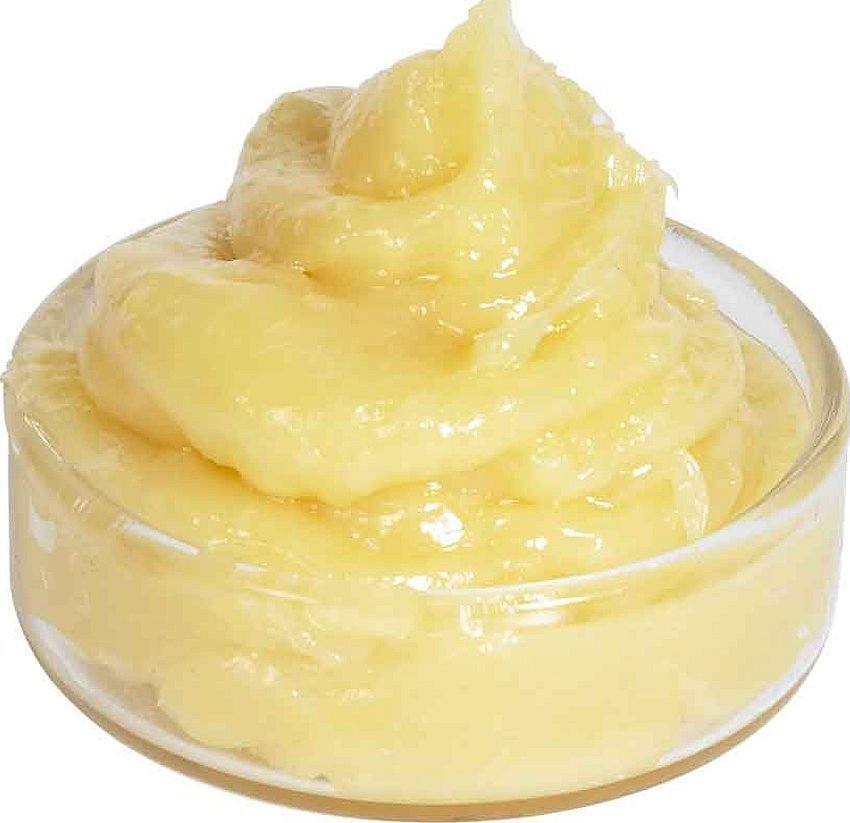
Sheep wool can also normalize blood pressure and sleep, has a beneficial effect on muscles and joints, and relieves fatigue.
There are 5 types of sheep fiber:
- Down fiber, which consists of a scaly and cortical layer, has an average thickness (from 5 to 30 microns).
- Transitional fiber. It is also characterized by a scaly and cortical layer. The diameter of the hairs is from 30.1 to 52 microns.
- Awn fiber. It is divided into fine (52.1-75 µm), medium (75.1-90 µm) and coarse (90.1 µm and more). Such fiber consists of continuous core, scaly and cortical layers.
- Dead hair. It is very similar to the guard hair fiber, differing only in the extremely developed core layer. Its length is more than 75 microns.
- Covering hair. This fiber is characterized by its short length, lack of crimping, and rigidity.
Use of sheep wool
Sheep fiber is widely used in various fields. It is used in the production of:
- Carpets. Weavers make wool bases or pile surfaces, which make the carpet beautiful and dense.
- Bedding. Fleece is used to make blankets, throws and pillows, which have excellent hygroscopic properties.
- Clothes. Socks, sweaters and vests are considered very warm and popular. For babies, pants are made that absorb moisture well, and the child always remains warm.
- Bath towels. These products are able to absorb drops and maintain body heat, providing maximum comfort after water procedures.
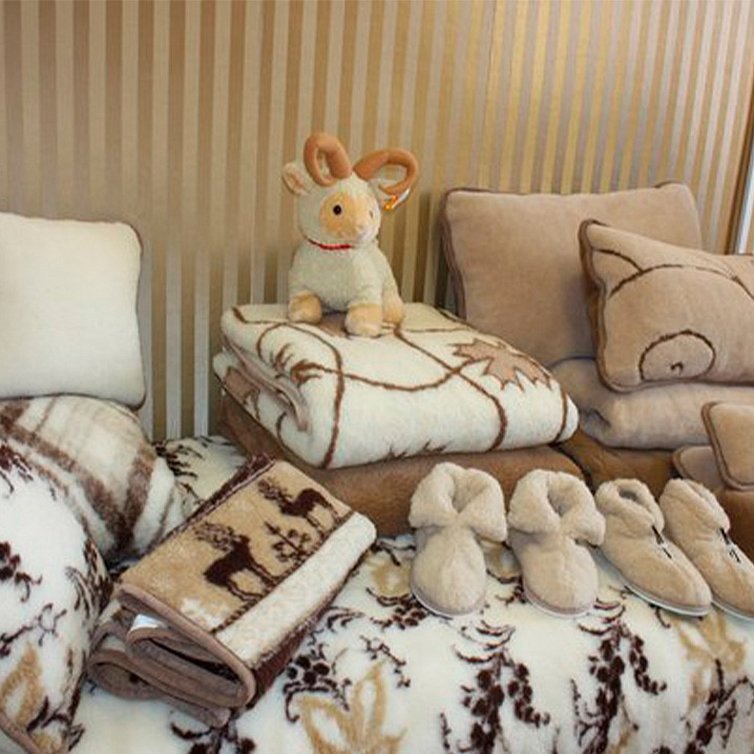
Wool products
All sheep wool items are very warm and environmentally friendly. However, not all of them are comfortable to wear, as some items can "bite". It all depends on the type of fiber.
Animals are divided into fine-wool, medium-wool and thick-wool.
Fine-wool items are more expensive. They are soft, airy, warm and do not itch. Hats, scarves, dresses and children's clothing are made from such wool.
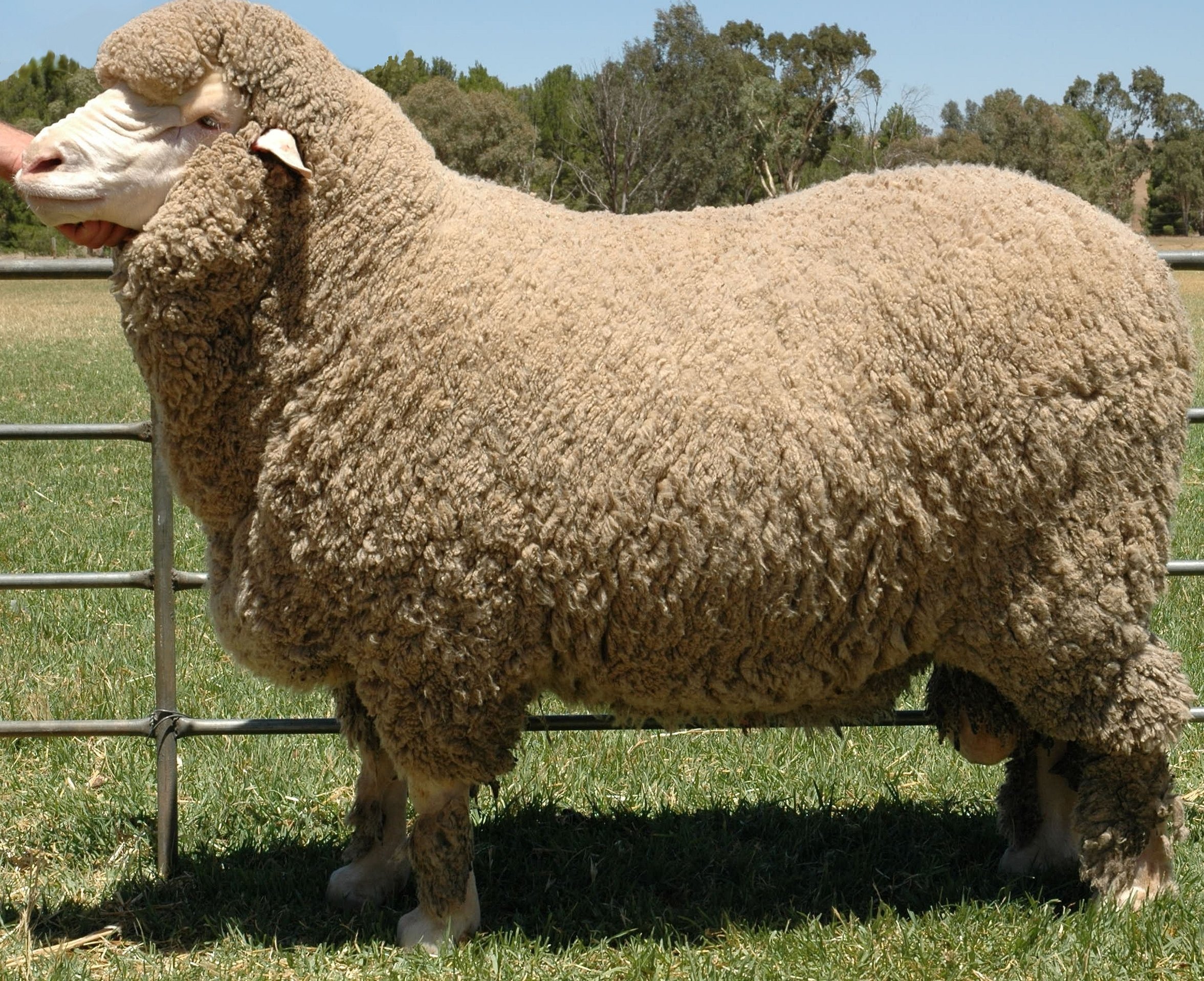
Medium wool fibers are mainly used to make bags, shoes, and decor. Wool and felt are felted wool. It holds its shape well.
Thick-fleeced fibers are mainly used in carpet production. If thick fibers get into the fabric, such a thing will bite.
To avoid trouble, you need to look at the label:
- Wolle – this inscription indicates that pure sheep wool was used to produce the clothes. Items with this mark are of average quality.
- Schurwolle, lanavergine, newwool, virginwool – indicate high quality. Wool contains no more than 7% of other fibers.
- Lambswool is the wool of a lamb that has been shorn for the first time.
- Merinowolle is a name that indicates merino wool of very high quality.
Additional informationIt won't be difficult to understand why the item you bought is itchy if the label states that it contains alpaca fiber.
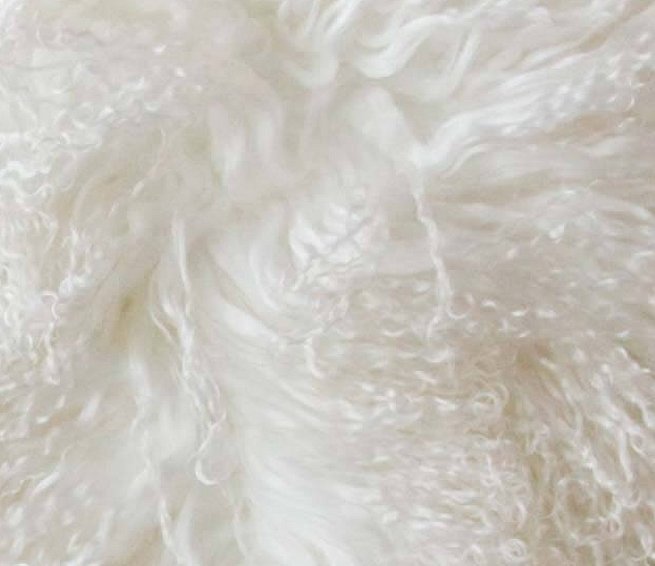
When choosing sheep wool, various indicators are assessed that directly affect the quality of the future product. When choosing fleece, pay attention to:
- Fineness is the diameter of wool fibers. The finer the fiber, the better the yarn and items will be made from it.
- Length. It is the size of the hairs that influences the appearance of the future fabric.
- Equalization. It is judged by the fineness and length. The ideal is the presence of a fineness in the rune that belongs to the same class or a difference of 1 degree.
- Color. The most valuable shade of wool is white, since it can be easily dyed into any other tone. If yellowing of wool is observed, it means that the animals were kept in improper conditions. The fiber has lost its natural color under the influence of heat and moisture.
- Durability. If the wool produced is easily torn, it is considered of poor quality and is called a trace. It will not produce good fabric.
How to Make a Sheep Wool Blanket with Your Own Hands
Sewing a blanket from sheep wool is a simple but labor-intensive process. It takes place in several stages:
- Selection of material. You can buy both pure and unwashed fiber on the market. Pure sheep wool is much more expensive than unwashed wool, but you will need twice as much to make a blanket. One adult will need 2.5 kg of raw material.
Additional information. You can also buy unwashed fleece and wash it yourself. You need to soak the yarn in soapy water and after a while take it out and lay it out on a grid. Periodically turn the wool over so that it dries evenly from different sides.
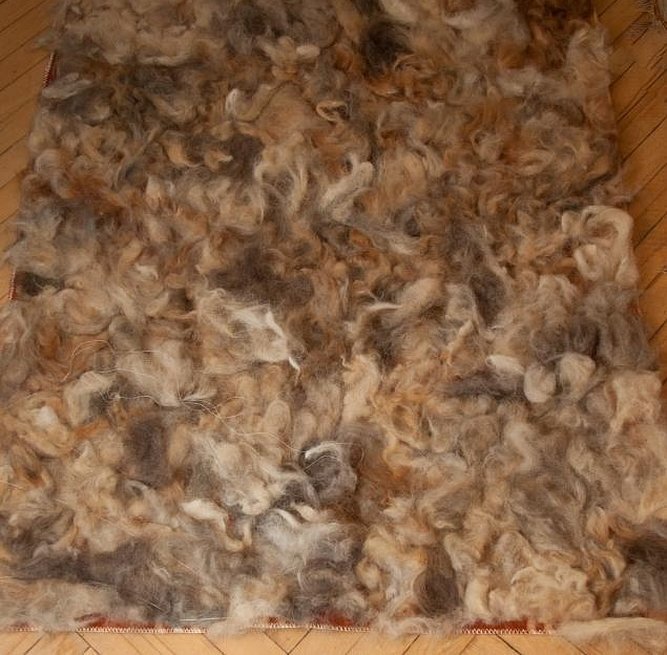
- Beating the wool. For this stage, you need to stock up on a long stick and a gauze bandage. You need to spread a blanket, put the wool on it and sprinkle it lightly with water. After this, take a stick and beat the fleece, periodically turning it over to the other side. The beating process should last until the amount of sheepskin increases by 2 times.
- Making a cover. A cover is sewn from calico or chintz. One side is left embroidered. The cover is turned inside out.
- Laying out the wool. You need to lay out the wool fibers on a well-straightened blanket. You need to smooth them out with your palms and call an assistant who will stand on the other side and roll the blanket into a roll. You should not roll it very tightly and constantly push in the yarn that hangs down at the edges. You need to grab the unsewn edge together and pull it onto the roll. Then straighten the sides and turn the cover inside out. The wool should be inside, after which it is smoothed out well with your hands. The embroidered edge of the cover is carefully sewn up.
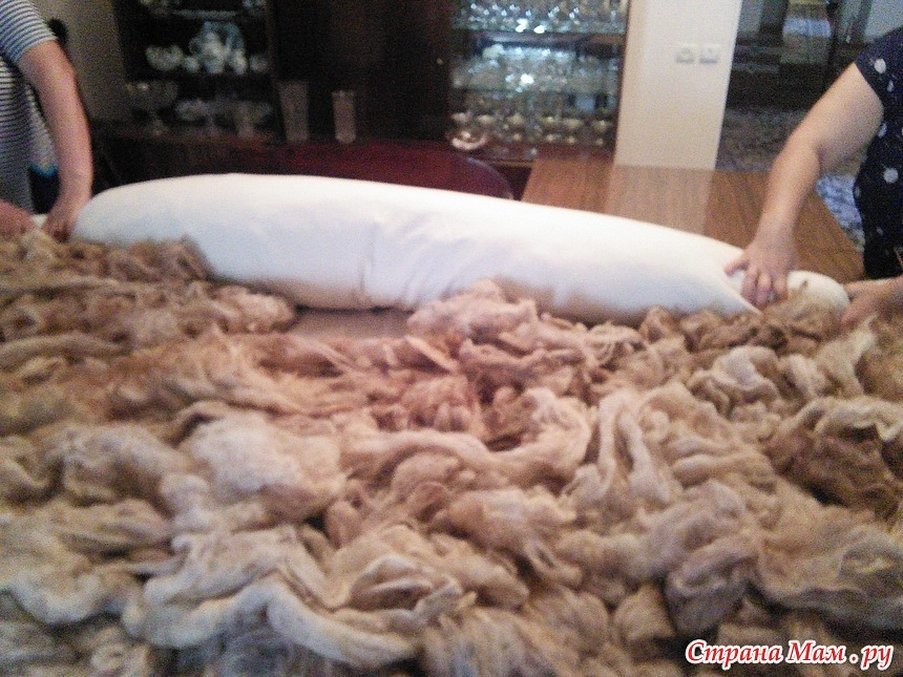
- Quilting the blanket. For this process, you need a #10 cotton thread folded in 3 layers and a large needle, at least 8 cm long. You need to step back 10 cm from any corner of the cover. Press down the corners of the product with a weight so that the blanket remains motionless. Stitches are made all over the blanket, keeping a distance of 10 cm. The thread should not end. If necessary, tie a new piece of thread to its end.
Pros and Cons of Sheepskin Blankets
Sheep wool blankets have been one of the most popular for many years. However, like many other things, they have their advantages and disadvantages.
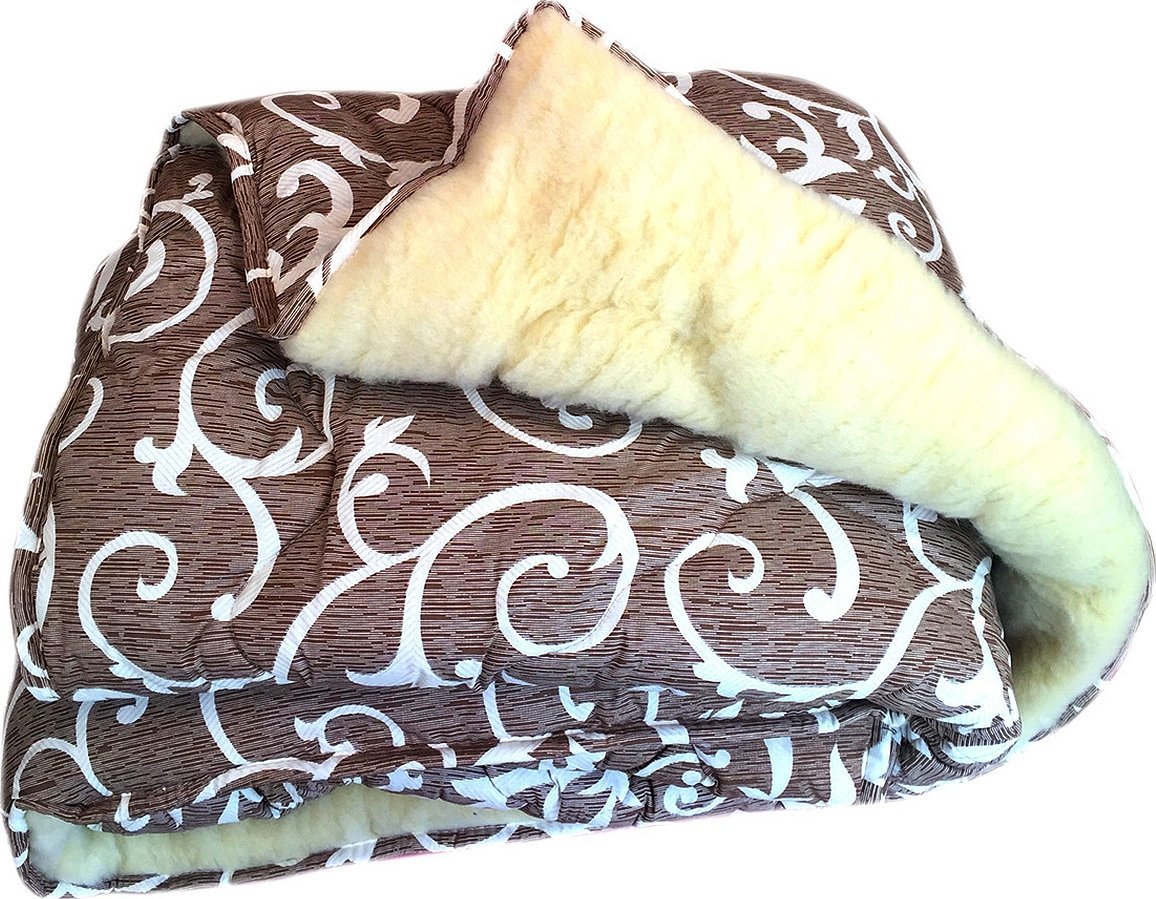
The main advantages include:
- Good circulation inside the product, which is ensured by the free arrangement of the fibers.
- Medicinal properties.
- The ability to maintain the body's natural temperature.
- Low cost.
- Eco-friendliness
- High hygroscopicity.
There are also some disadvantages:
- Natural fiber tends to cake, so the blanket will only last a few years.
- Ram wool attracts dust mites, so such a product can cause allergies.
- The blanket is difficult to care for, as it is not suitable for washing.
- Poorly processed fleece has a very unpleasant smell.
- If you buy merino wool, the products will be prickly.
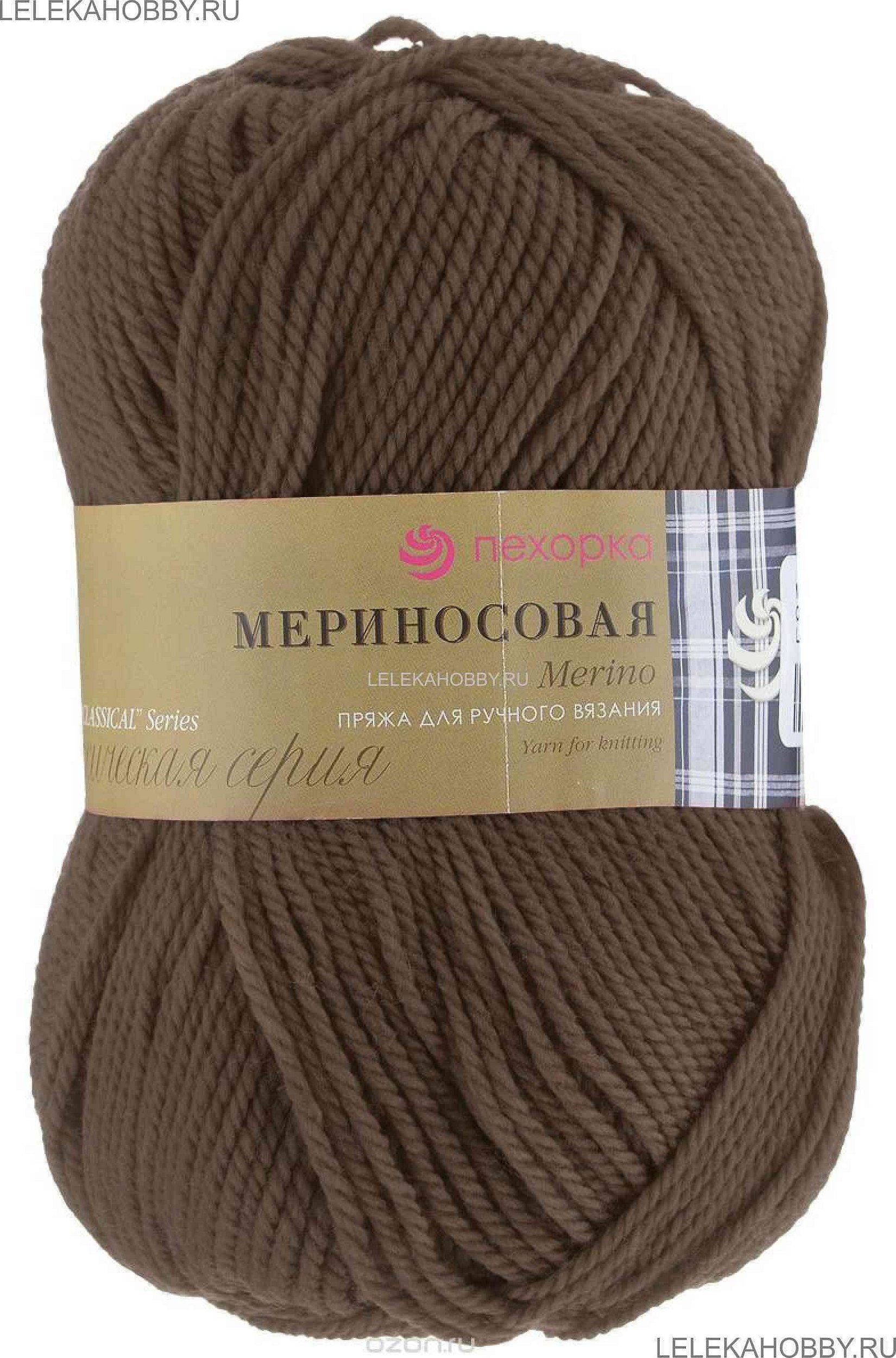
Sheep wool is one of the most common natural materials. It is distinguished by its unique quality and, although there are some disadvantages in its use, they are still insignificant. Therefore, you should not refuse warm original things that can brighten up gray everyday life.




